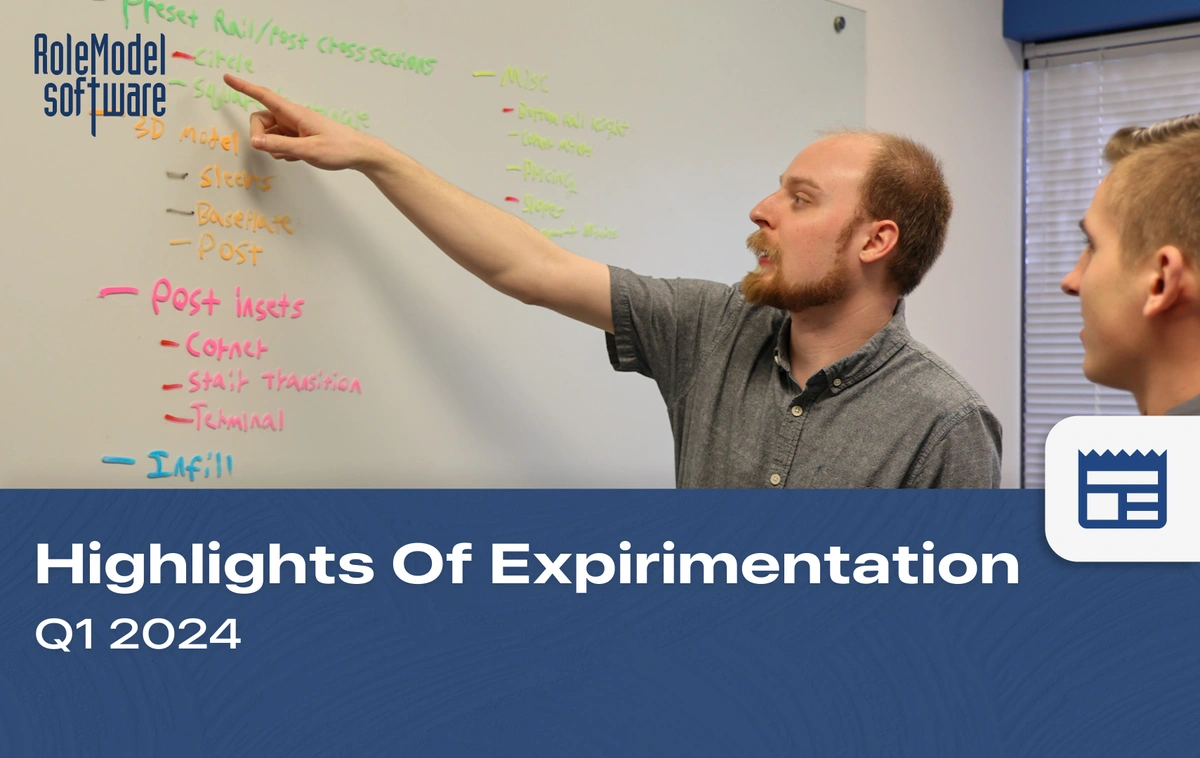•April 12, 2024

Each quarter, we gather as a team to build teamwork and further improve the tools and processes used in our daily work. We call this CCC Days after our three core values of Character, Collaboration, and Craftsmanship. With our 2024 theme of building an Impact Mindset, we’ve focused on internal experiments to better support our partners. We covered over 14 experiments in our recent CCC Days, and we wanted to highlight a few here.
As we partner with our clients, a few areas that we’ve recently gone deeper in functionality are notifications and custom formula editors.
One of our focuses is expertise amplification, and one way we do that in software is by creating an excellent user experience (UX) for our partners. With better UX, anyone in their company can benefit from the expertise of the experts that is encoded into their software assets. This concept led to our first project with custom formula editors.
With many of the manufacturing partners that we work with, our software goes a long way to amplify their expertise, but not all of that can be baked into the software statically. They need a way to override or change calculations over time. Often with projects like this, we are migrating from Excel to custom software, so the idea of formulas is familiar. With this experiment, we wanted to improve the usability of creating those formulas with things like autocomplete and errors. In addition, creating a better baseline for us to start with on new projects.
Leveraging the monaco-editor, we created a custom theme and language for editing formulas. This added the creature comforts and error checking, making complex formulas much easier to work with.
Another one of our focuses is iterative value, which is getting value to our partners by getting them working software as quickly as possible and then increasing its functionality iteratively throughout the course of the project. Over our last few projects, we have been doing more with notifications and wanted to experiment with the best approach for multi-channel notifications.
Historically we’ve built notifications for for email, SMS, in-app, or mobile push notifications, but those were always a bit separate approaches. We wanted to experiment with unifying our approach across mediums. We chose to use the noticed gem, which is the base for a new framework feature coming in Rails 8. By having a unified framework, we can more easily slot in features like batching notifications or delaying notifications to see if they get read in the system. These experiments will support more functionality than the patterns we had previously developed for ourselves.
Our LightningCAD Framework is a powerful engine for creating detailed 3D views of user-created designs. Viewing in a browser is great, but we want to continue to push the technology as Augmented Reality (AR) and Virtual Reality (VR) become more common. We previously experimented with AR/VR, but the focus of this experiment was to ship a production-ready demo for our Design Price Quote (DPQ) platform.
In our most common verticals, Rails Designer and Dock Designer, we use this technology in slightly different ways. AR makes the most sense for Railing Designer because when you are laying out railings, you usually have an existing structure, so AR lets you see your railings in your space. Our goal was to create an AR demo that easily aligns with the current structure. For Docks, there isn’t an existing structure as you are building on the “open water,” so VR is a better fit to explore the blank slate.
These experiments allow us to work with team members we don’t get to work with regularly and foster collaboration as we work to develop a new process or solve a problem. Our experiments let us try new procedures or tools, make us more efficient, help us serve our customers better, and ultimately, allow us to grow in craftsmanship.